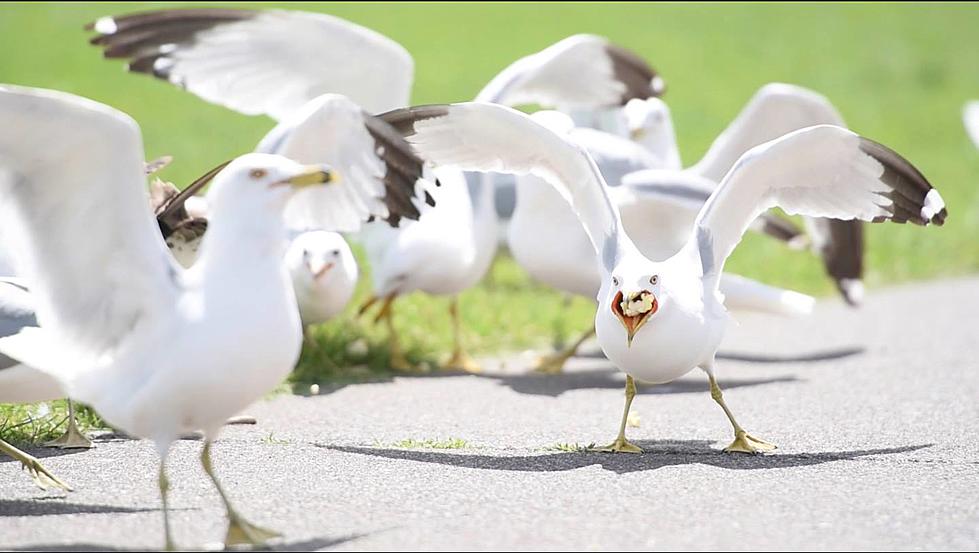
Is It Illegal to Feed Gulls? Here’s the Minnesota DNR’s Answer
Seeing tourists (or even residents) feeding the gulls in some waterside areas around Minnesota is a somewhat common sight. Especially in places like Canal Park in Duluth, where there's an availability of people food and an abundance of gulls hanging out.
While many people do it each year, the question of whether or not you should (or if it is legal) is unclear to many.
Those who feed the gulls would suggest that it is fun to interact with some local wildlife, while those opposed argue that the birds are often a nuisance. The combination of sheer numbers of birds congregated, noise, waste (nobody likes to step in poo, or even worse, be bombed from above), and aggressive behavior when food is involved is enough to make some people mad.
So, what does the Minnesota DNR say about feeding gulls?
A document from the DNR about damage caused by gull populations details how herring gull and ring-billed gull populations have exploded due to their ability to thrive in human environments. Besides trash and agricultural food resources, handouts from humans are included as a notable food source for gulls; leading to population increases and negative impacts due to larger populations.
Among those negative impacts, the DNR outlines the following:
- Property Damage - Accumulations of gull droppings can destroy roofing materials, dock components, and boat/pool canvases and covers, among other things.
- Agricultural Damage - While not a prevalent concern in Minnesota, stored livestock food can be contaminated by gulls feeding in feedlots and transmission of disease can occur.
- Human Health and Safety - Gulls are listed as the primary contributor to bird-aircraft strikes and gull fecal matter can increase bacteria levels in bodies of water, leading to infection concerns among humans.
- Harassment of People - Due to humans feeding gulls directly, the birds have become unafraid of people. This has led to the development of bold behaviors that include attempting to steal food from people which can include aggressive behavior.
Besides the above-listed negative impacts provided by the DNR, many types of gulls are carnivorous, and some will eat the eggs or young of other gulls or other species of birds.

Considering all of the negative impacts, the Minnesota DNR explicitly states humans should not feed gulls either directly or indirectly. Direct methods (obviously) include intentionally giving food to the birds, while indirect methods can include unsecured garbage, pet food, or other food items to which gulls can get easy access.
While there is a firm recommendation from the DNR not to feed gulls, the answer to the question "is it illegal?" is "no". There are no laws currently on the books that ban the feeding of gulls. Such laws would likely be extremely hard to monitor and enforce, however, people should be smart and simply not do it.
If you are dealing with menacing gulls at your home or business, it is worth noting that these birds are protected as a migratory bird species under the Migratory Bird Treaty Act. The DNR does offer some suggestions for how to deal with menace gulls on a special section of their website.
20 Least Expensive Counties In Minnesota To Live In
Gallery Credit: Nick Cooper - TSM Duluth
More From B105









